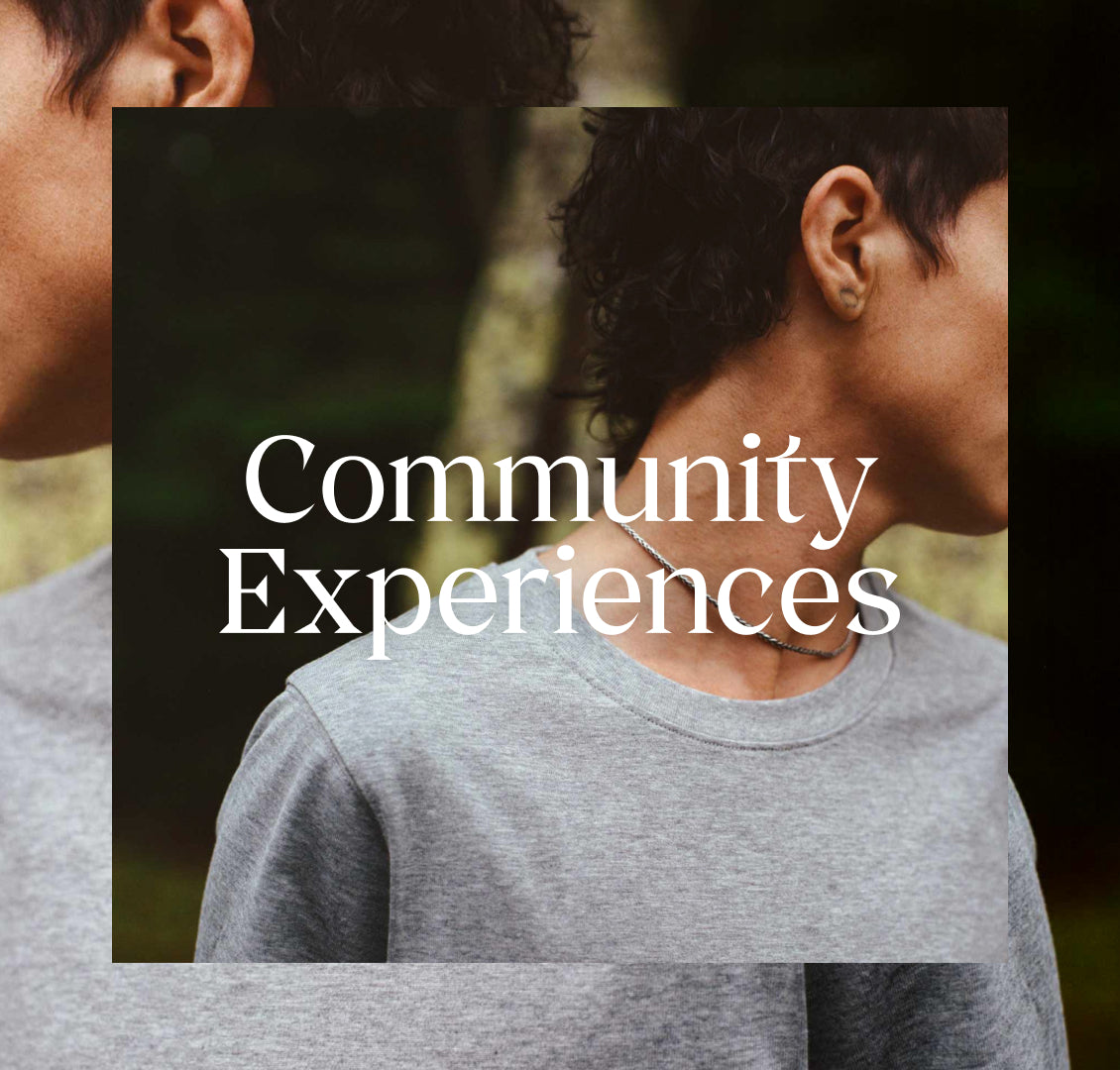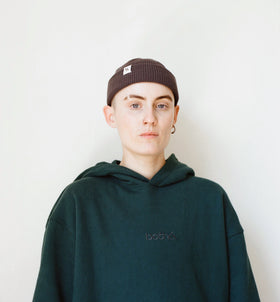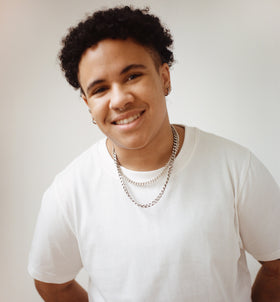
Nov 17, 2023
Gender Dysphoria and Gender Euphoria
Finnegan Shepard Founder of Both&
There’s a lot of information on the internet about gender dysphoria and gender euphoria. These articles are helpful in terms of providing definitions and exploring topics like gender affirming surgeries, the diagnostic and statistical manual around gender expression, assigned gender at birth, treatment for gender dysphoria, and mental health challenges.
But in this essay, we want to take a different approach, and focus on personal narratives. Sometimes the most helpful thing isn’t a definition or medical term—it’s simply hearing a story you relate to and that can make you feel less alone.
That being said, we do think it’s necessary to start with brief definitions of gender dysphoria and gender euphoria, so we can start on the same page.
The medical definition of gender dysphoria states that individuals experience “a marked incongruence between their experienced or expressed gender and the one assigned to them at birth.” In other words, you feel that the gender you identify with and that feels right to you does not match the gender you were assigned at birth.
In contrast, gender euphoria is “satisfaction or joy caused when one’s gendered experience aligns with their gender identity, rather than with the gender they were assigned at birth.”
Experiences of gender dysphoria

“When I was younger, I never really noticed pronouns. It was like they were this kind of placeholder for language that didn’t mean anything.
But then when I was in middle school, I guess around 12 or 13, I started noticing people using ‘she’ or ‘her’ in reference to me, and because I was starting to associate it with other things I saw going on around me–the way teenage girls were dressing, how they talked about boys, these kind of implicit gender associations, I became more and more uncomfortable with those pronouns. It was like death by a thousand paper cuts.”
“When I was nine, my cousin got married, and she wanted me to be a flower girl. There were five of us. She wanted all of us to wear matching dresses. I remember feeling so excruciatingly uncomfortable and also ashamed.
I loved my cousin. I wanted to make her happy. I wanted her to have her perfect wedding.
But putting on the dress made me feel like I was crawling out of my skin. I spent the whole wedding with my arms crossed over my chest, jealous of my boy cousins who got to wear suits.”
“Boobs. My boobs are the thing that make me the most uncomfortable. I feel pretty fine with the rest of my body, I don’t think I want to go on hormones, but if I could just have top surgery and have a flat chest I know I would be so much more comfortable in my body.
Everything about my chest, the way it feels, how clothing sits on it, everything. Ugh. It feels so wrong.”
“I never recognize myself in photos. It’s the weirdest thing. Sometimes in the mirror I feel like I’m really seeing myself, especially if I angle myself in a particular way, but in photos I am always like ‘who is that?’. All I can see are the curves, all these little things that look feminine when I know that’s not me.”
As you can see from the examples above, gender dysphoria can be triggered by a variety of things, from pronouns to secondary sex characteristics to clothing to photographs.
Sometimes all of these things trigger it, sometimes some of them don’t register at all but others do very acutely.
It's important to remember is that there is not a ‘right’ or ‘wrong’ way to experience gender dysphoria. Unfortunately, because the way the manual of mental disorders and how the medical system operates, gender queer people have been forced into ticking certain boxes to be able to access medical care. This has created a false binary of what is ‘real’ dysphoria versus ‘fake’ or passing.
If you experience a dissonance between your gender identity and your gender assigned at birth, that is gender dysphoria.
There isn’t just one way to treat gender dysphoria. Some find relief and connection through medical transition.
For others, socially transitioning or playing with presentation brings a sense of alignment. There’s no single path. The important thing is for you to remember that you are not alone, that it is okay to feel what you are feeling, and that there are a wide variety of options to explore.
Experiences of gender joy

Now that we have discussed gender dyphoria, let’s explore stories the cover the feeling of gender euphoria!
“I had this girlfriend in high school, this was back before I was ‘out.’ To be honest I didn’t even have the language for my transness yet. But she just kinda saw through me, or like, she saw the real me before I had a name for it.
She would always call me her ‘stud,’ her ‘boyfriend,’ her ‘prince.’ I never knew how to respond, I was so happy whenever she said those things but also really embarrassed because I felt like I was somehow being ‘caught out.’ But she must have known how much I loved it, because she kept doing it.
Our relationship ended when we went our different ways/off to college, but I still attribute the foundation of my confidence to explore my trans identity to her giving it a kind of name. It sounds so simple, but when someone else names it for you, it releases you from that fear that you are crazy or pitiable or anything like that. It was the smallest, most magnificent gift.”
“When I was maybe six months into transitioning, I saw a friend post on IG about this brand called Both& Apparel. I think I’d seen some ads of theirs or something but I hadn’t really paid attention to it, because I’ve been so disappointed by brands in the past that claim to be designing for me, only to try them out and have the same terrible fit.
But when my friend posted about it and was so genuinely happy in the clothes, and the clothes legit looked so good, I was like, ‘hmmm, maybe I should try this after all.’ So I ended up buying one of their shirts, I think it was the Finnegan, and oh my god. I had no idea a shirt could actually do that.
The minute I put it on and looked in the mirror I was like, ‘oh my god, that’s me.’ It was just perfect. It made my shoulders look super buff, it wasn’t clingy at all and my binder wasn’t poking out the top which drives me nuts. I didn’t realize clothing could bring so much gender joy."
“I was boarding a plane last month and the air steward behind me was saying, “sir,” and I didn’t even realize she was referring to me. It was the first time someone in public had called me sir.
I was kind of nervous to turn around and have her change her mind/it be awkward, but that didn’t happen. I said, ‘yes,’ and she just asked if I would mind changing rows, and I was so happy I didn’t even care that I was now in an aisle seat when I prefer the window. It suddenly felt like the future was wide open and beautiful and filled with possibility.”
Tools for self empowerment
The hard reality of gender dysphoria is that it is rarely a brief experience. For most of us, gender dysphoria has lived in us in some form or another for most of our lives. Living with it and constantly working towards gender joy can be a long and challenging process.
However, while it’s important to be honest about the realities of gender dysphoria, there are also a lot of resources and tools today that can help alleviate it. When talking with other trans and nonbinary people, these are the top things that people listed as being crucial aids for them in their journey:
-
Community/representation. It’s so important to not feel alone in your journey. Finding companionship is a huge comfort. This can come through online or in person communities, as well as finding representation in media or books. There are a lot of other people out there experiencing or having experienced the same thing, and the more you are aware of that and feel less isolated, the better.
-
What makes you feel good in your body? This is a really important tool that a number of people listed. While the body can be an uncomfortable place to inhabit, there are often situations and ways of being in the body that feel better than others. Some people feel really empowered when they work out or lift weights. Some people find a lot of empowerment in cutting their hair, or when they are able to go off deep into nature and swim topless, feeling free from societal norms.
-
Gender affirming clothing. Building a wardrobe that aligns with your gender identity has a huge daily impact. This can be constructed in a variety of ways, from functional wear like binders or gafs to pairing ‘traditional’ cisgender fashion to trying out brands like Both& that make clothing in proportions specifically made for transmasc and nonbinary folks.
- Self care and patience. This one is really hard, but something that pretty much everyone listed. It can be so uncomfortable to live with gender dysphoria, and can lead to a sense of hopelessness and helplessness. But things do change, and you have to be as kind and patient with yourself as you can be along the way. You have done nothing wrong, nothing is wrong with you. Try to give yourself as much love as you can. You deserve it.
Conclusion
If you are looking for a medical deep dive on gender dysphoria, this article isn’t for you. There are plenty of those articles out there. Instead, what we wanted to do today was to provide a more human approach, sharing real stories of gender dysphoria and gender euphoria from the transgender and nonbinary community members. It is through stories that we are most able to recognize ourselves, find comfort and empowerment.
If you would like to share your story with us, please reach out, we always love talking with more people in the community.




